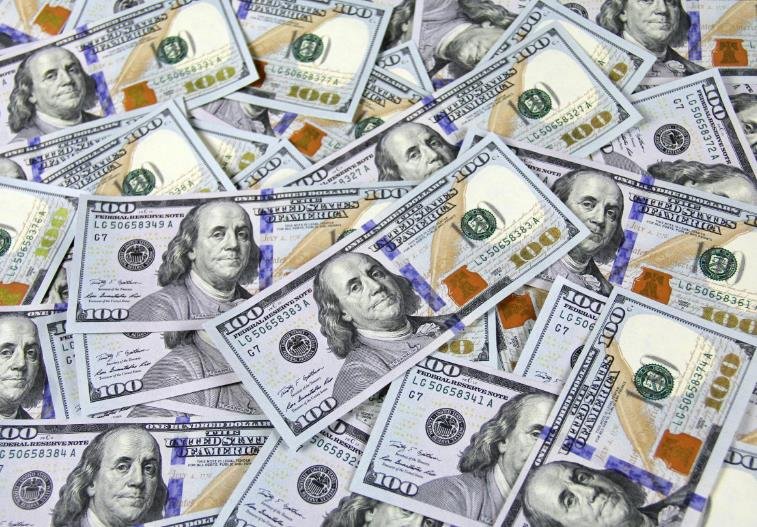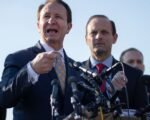The U.S. dollar is poised for a notable ascent in the coming years, driven by anticipated rate cuts from foreign central banks. Economists at Wells Fargo highlight that despite short-term fluctuations, the dollar’s long-term trajectory remains bullish. This shift is largely influenced by global economic strategies aimed at stimulating growth, particularly in G10 and emerging markets.
Surge in Long-Term Dollar Strength
Wells Fargo analysts have revised their outlook, now expecting the U.S. dollar to exhibit more sustained strength over the long term. This optimism stems from the anticipated acceleration of rate cuts by foreign central banks. As these institutions aim to bolster their economies, the resulting easing measures are likely to depress their respective currencies, thereby enhancing the dollar’s relative value.
The research underscores that the combination of robust U.S. economic growth and strategic monetary policies will create a favorable environment for the dollar. Additionally, sentiments toward China’s economic performance remain tepid, further supporting the dollar’s ascent. This dynamic is expected to exert downward pressure on both G10 and emerging market currencies through 2026.

Immediate Weakness Followed by Reversal
In the short term, the dollar may face headwinds, particularly against G10 currencies. However, this trend is projected to reverse in the latter half of 2025. The Federal Reserve’s gradual slowdown in rate cuts contrasts with the continued easing by foreign central banks. This divergence is anticipated to enhance the dollar’s appeal as global investors seek stability and stronger returns in the U.S. market.
- Foreign Central Bank Easing: Accelerated rate cuts by G10 and emerging market banks.
- U.S. Growth Momentum: Sustained economic expansion in the United States.
- China’s Economic Challenges: Ongoing underperformance affecting high beta currencies.
These factors collectively contribute to a robust outlook for the dollar, positioning it as a resilient asset amidst global economic uncertainties.
Impact of U.S. Presidential Election
The upcoming U.S. presidential election on November 5th adds another layer of complexity to the dollar’s future. A potential victory for Donald Trump is expected to bolster the dollar’s strength, irrespective of the congressional landscape. Conversely, a win by Kamala Harris could trigger a temporary relief rally, supporting foreign currencies and leading to a brief depreciation of the dollar.
Election outcomes will heavily influence trade and fiscal policies, further shaping the dollar’s trajectory. Policymakers and investors alike will closely monitor post-election developments to gauge their impact on the currency markets.
Central Banks’ Strategic Rate Cuts
Foreign central banks are likely to expedite their rate-cutting measures to support economic growth. This strategic move is essential for maintaining liquidity and fostering investment in regions facing economic headwinds. The faster pace of easing by G10 central banks is expected to weaken their currencies, making the dollar a more attractive option for global investors.
Emerging market currencies, in particular, may struggle as these economies grapple with balancing growth and financial stability. The interplay between U.S. monetary policy and foreign rate cuts will be a critical determinant of the dollar’s future strength.
Key Factors Influencing Dollar Strength
- U.S. Economic Performance: Strong growth indicators bolster investor confidence in the dollar.
- Foreign Rate Cuts: Accelerated easing by central banks diminishes the value of other currencies.
- China’s Economic Sentiment: Continued economic challenges in China negatively impact currencies like the euro and New Zealand dollar.
These elements collectively set the stage for the dollar’s upward trajectory in the global financial landscape.
Future Projections and Market Reactions
Looking ahead, the dollar’s enhanced strength is expected to influence various aspects of the global economy. Higher dollar value can lead to increased costs for imports in the U.S., potentially impacting consumer prices. Additionally, multinational corporations with significant overseas revenues may experience reduced earnings when converted back to dollars.
Market participants are advised to stay informed about central bank policies and geopolitical developments that could affect currency valuations. As the dollar gains momentum, strategic adjustments in investment portfolios may be necessary to navigate the evolving financial environment.
As foreign central banks ramp up rate cuts to support their economies, the U.S. dollar is set to benefit from enhanced strength in the long run. While short-term fluctuations are anticipated around the U.S. presidential election, the overall outlook remains positive for the dollar. Investors and policymakers must remain vigilant, adapting to the shifting dynamics to leverage opportunities and mitigate risks in the global currency markets.








